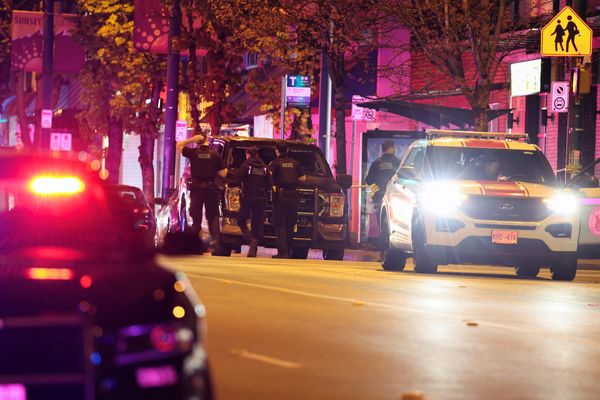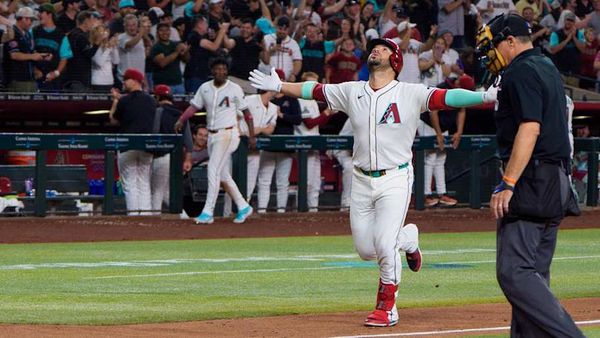
The Paul Ricard circuit in its current guise as a test venue may not be a crowd favourite among Formula 1 fans, but that won't stop the fans flocking to the venue this weekend for the French Grand Prix.
The home support have two drivers to cheers on in the form of Pierre Gasly and Esteban Ocon, though it has been 32 years since a French driver won their home race.
Regardless, the French GP has thrown up many enthralling moments over the years to delight the packed grandstands. Autosport's writers pick out their favourite moments from years gone by.
1953, ‘The Race of the Century’ - Kevin Turner

It may seem a bit strange picking a favourite that took place before you were born, but an event described as The Race of the Century deserves a closer look.
Nobody other than Ferrari star Alberto Ascari had won a points-paying race for more than a year (excluding the anomalous Indianapolis 500) when the field arrived at Reims for the 1953 French Grand Prix.
Ascari duly took pole in his Ferrari 500, the benchmark machine of the two-litre unsupercharged Formula 2 era of the world championship. But Maserati’s challenge had grown stronger and there were three A6GCMs in the top five.
Archive: The rise and fall of Ferrari’s first great champion
Jose Froilan Gonzalez shot into the lead immediately. The Argentinian had started on half tanks in his Maserati and pulled away as the Ferraris of Ascari, Mike Hawthorn and Luigi Villoresi swapped positions around the high-speed track.
Juan Manuel Fangio ran sixth in the early stages but rose through the field and overtook Ascari for second just before Gonzalez made his fuel stop and fell to sixth.
Hawthorn also went by Ascari, starting a fantastic duel with Fangio as they constantly swapped places. The lap charts show them exchanging the lead 11 times in the second half of the race, but it was probably a lot more than that as they slipstreamed past each other around the track.
Hawthorn had a narrow lead going onto the final lap. Fangio challenged, but the Ferrari’s superior acceleration helped Hawthorn win the dash to the flag to become the first British victor of a world championship race.
Just behind, Gonzalez and Ascari had been charging back into contention. As the fight for the lead raged, they put on another fine battle for third. Gonzalez got the better of the reigning world champion and fell 0.4 seconds of catching team-mate Fangio. Just 4.6s covered the top four after two hours and 45 minutes of racing.
2003, Minardi achieve history as Williams cracks appear - James Newbold

My reasons for picking the 2003 French Grand Prix as my favourite edition of the event have almost nothing to do with the race itself.
Magny-Cours was never a brilliant layout for overtaking and arguably made worse by the new chicane installed at the end of the lap that year, although it provided some extra intrigue by catching out Rubens Barrichello's Ferrari. The Brazilian was lapped and finished seventh, behind Mark Webber's Jaguar.
But wind the time back to Friday qualifying and something truly remarkable occurred - Minardi topped the times. Yes, it was only first qualifying (back when two one-shot sessions were held, the first in championship order determining the running order for the second that set the grid), but it was a one-off in its 340-race F1 history.
Jos Verstappen took full advantage of a wet but drying track that meant conditions were most favourable for those running towards the end of the session. Utilising dry tyres, he beat Jordan driver Ralph Firman's benchmark by 2.6s then held on as team-mate Justin Wilson - running last - lapped 0.1s slower.
It was to prove academic however, because Minardi was never going to have the pace in the dry to repeat that feat, and they reverted to the norm for the race (after Wilson's Friday time was scrubbed for being 2.5 kg underweight following the late choice to swap wets for dries) in 19th (Verstappen) and 20th (Wilson) respectively.
Whether you decree that to be a sign of a flawed qualifying format is entirely subjective. But to the mind of this eight-year-old, it was utterly brilliant and greatly more deserving of attention than what transpired in the race itself.
Polesitter Ralf Schumacher headed Williams team-mate Juan Pablo Montoya in a 1-2 that left the Colombian feeling rather disgruntled. He had pitted one lap earlier than planned in a bid to jump Schumacher, only for the German to follow suit and remain ahead. An irate Montoya let his displeasure be known over the radio and received a short shrift from the pitwall.
Schumacher's second win on the trot put him just 11 points behind championship-leading brother Michael, who joined them on the podium, in what was shaping up to be a tantalising four-way title battle including Kimi Raikkonen and Montoya. Raikkonen still finished fourth, despite an exploded brake disc, as McLaren team-mate David Coulthard suffered a slow stop caused by needing to switch to a reserve fuel rig and then attempting to leave with it still partially attached.
1989, Prost dominant but pitlane to P2 makes Mansell the hero – Haydn Cobb

The Alain Prost vs Ayrton Senna at McLaren narrative in 1989 took a rare and unexpected backseat at that year’s French Grand Prix, despite the pair having locked out the front row by over a quarter of a second from Nigel Mansell in his Ferrari.
Carnage raged at the start when Mauricio Gugelmin locked up at the first corner and skittled into Thierry Boutsen and Gerhard Berger, before landing on top of Mansell’s rear wing. The race was immediately red flagged, as the 1985 British Formula 3 champion stepped out of his rolled March and remarkably was relatively unscathed.
Mansell made the restart but in the spare Ferrari he was forced to start from the pitlane, while Senna’s race ended not long after when his McLaren came to a halt on the opening lap. Without the presence of his arch rival at the front and Mansell mired in the pack, Prost eased to clear towards a fourth home race win.
In fact, due to the early chaos and an incredible first lap to go from 16th to ninth, F1 debutant Jean Alesi became the surprise closest contender to Prost, rising to second in his Tyrrell before pitting. While he would be shuffled back to fourth place at the finish, it marked a stunning maiden outing as he was the final driver to remain on the lead lap at the finish.
But, arguably, Alesi’s triumph was overshadowed by Mansell’s own charge through the pack as he carved up the order to catch former Williams team-mate Riccardo Patrese in the closing stages. Pressure applied by the British driver saw Patrese make a crucial mistake and spin off, opening the path for Mansell to take second place.
1999, Frentzen shines as Jordan wins wet weather gamble - Jake Boxall-Legge

In modern day Formula 1, a "mixed-up grid" is usually considered such when there's an interloper among the traditional top three teams - think Fernando Alonso in Canada. The 1999 French Grand Prix held at Magny-Cours, however, is a demonstration of a true mixed-up grid, assisted by the wet conditions.
Rubens Barrichello bagged pole in his Stewart, with home heroes Jean Alesi (Sauber) and Olivier Panis (Prost) starting second and third. A more traditional front-running trio of David Coulthard, Heinz-Harald Frentzen and Michael Schumacher occupied the next three positions on the grid.
The race began in dry conditions, and the superior pace of the Stewart-Ford SF-3 - the Cosworth engine in the back being much improved after its double Australia detonation on the grid - helped Barrichello clear Alesi. The one-time race winner was rather the cork in the bottle, and Coulthard dispatched him to climb up to the leading Barrichello - whom he also made his way past to claim the lead. Then, the McLaren driver's alternator packed up, allowing Barrichello to return to the lead.
In the meantime, Mika Hakkinen had been in a hurry at the start of the race and had carved his way though the pack - getting through Frentzen and Alesi to climb up to second from 14th on the grid. Then, it began to tip down, prompting a frenzy of pitstops to bolt on the wet tyres. It was here where Frentzen and Jordan arguably won the race.
Eddie Jordan tells a story in his autobiography where he stationed the team's resident odd-job to stand in the nearby village with an umbrella and a phone and keep the team informed of the weather. Per EJ, the team was informed that the rain wasn't about to stop, and thus the Jordan pit crew filled Frentzen's car up to the maximum and sent him on his way, intending not to stop again.
A safety car period followed the stops, as Alesi threw his Sauber into the gravel, with the race brought to a restart on lap 35. Three laps later, Hakkinen attempted to clear Barrichello for the lead but botched his pass, as a fat-with-fuel Frentzen lost a place to Schumacher. The latter then got past Barrichello for the lead as Hakkinen began another ascent, with Schumacher building a lead that got to eight seconds - before electrical trouble hit, necessitating another pitstop to swap out his steering wheel.
Barrichello led again, passed by Hakkinen again as Frentzen looked good for third - but the top two had to stop again for a splash-and-dash to the finish. Frentzen did not - and won, securing Jordan's second F1 victory in difficult conditions. Whether you believe EJ's parable of the man with the brolly, or whether the team had just taken a gamble and won big, it set Frentzen on course for an unlikely title bid.







